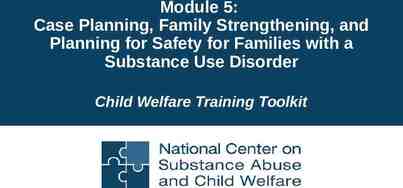Bio 27 Human Sexuality
25 Slides938.00 KB
Bio 27 Human Sexuality
Chapter 1 Perspectives on Sexuality
Why study human sexuality? Some possibilities – Learn about our bodies--reproductive & sexual anatomy & physiology – Improve interpersonal communication – Become better educated about contraception, STDs, pregnancy, birth, sexual functioning – Remember, the final expert on your sexuality is YOU!
What is Sexual Intelligence? Four components of sexual intelligence – Self-understanding – Interpersonal sexual skills – Scientific knowledge [1.Understanding 2. Predicting and 3. Controlling] No truths!!! – Critical considerations of the cultural, political and legal contexts of sexual issues. [Role models]
Controversy and Diversity within the USA - Students represent diversity of ages, ethnic and religious backgrounds, life experiences, liberal and conservative attitudes. - Sexual experiences vary, but, there are no universal sexual attitudes and experiences. - US made of many ethnic and religious groups, thus, a wide range of sexual values and behaviors. - Note these differences are generalities not universal truth!!! Acculturation - replacing traditional beliefs and behavior patterns with those of the dominant subculture.
Biopsychosocial orientation Human sexuality is governed mostly by: 1) Psychological factors. - emotions, attitudes, motivations 2) Social conditioning. - the process by which we learn society’s expectations and norms 3) Biological factors - hormones, experiences (that which we have learnt) What we regard as “natural” is all relative!
How Important is Sex in Your Life? Global Perspectives
Cross-Cultural Perspectives: Islamic Middle East Based on beliefs of Muhammad Sex enjoyed by both sexes Women inherently more sexual than men; this power contained by veils, segregation, female circumcision Oppression of women and many sexually related restrictions stem from patriarchal cultural traditions and fundamentalist sects, not from religion and the teaching of the Qur’an.
Cross-Cultural Perspectives: China Ancient history promoted sexual activity (Taoism) but with Confucianism came stricter sexual attitudes. Sexual conservatism with communist rule (1949) – Lack of basic information about sexuality – Sex outside of marriage and frequent sex within marriage discouraged – Almost no STDS Current trends: increasing rates of pre-marital sex; increasing STDs; slightly more open to homosexuality; still lack of sexual knowledge and safe-sex skills.
Our cultural legacy Western culture: – – Highly influenced by Judeo-Christian tradition Affects you whether you belong to those religions or not. Let’s examine 2 these of our cultural legacy more closely: 1) SEX FOR PROCREATION 2) RIGID GENDER ROLE LEGACY
Discussion question: (1-A) If you heard someone say “I had sex last night,” what specific behaviors would you think happened? In other words, what does it mean to “have sex” specifically?
Sex for procreation Reproduction is the only “legitimate” and “moral” reason for sex. “Sex” becomes synonymous with penile-vaginal intercourse. – If you heard someone say “I had sex last night,” what specific behaviors would you think happened? What are the consequences of this thinking? Penile-vaginal intercourse is primary source of satisfaction Sexual response and organism are supposed to occur during penetration Places tremendous and unrealistic expectations on coitus itself Devalues nonintercourse sexual intimacy (eg. ‘What do they do during sex?’)
Rigid Gender Role Legacy Creates different expectations for males and females. EX: Is a “slut” thought of usually as a male or as a female? Limits sexual experience for both men and women.--HOW? – Males: – Females: There are biological differences between the sexes--but socialization is what shapes the idea of “gender” and exaggerates differences between the sexes
Sexuality in the Western World: Judeo-Christian Perspective Ancient Hebrews – Rigid gender roles but sex as a profound physical and emotional experience. Christianity – Spirituality through celibacy; sex as sinful – Contradictory images of women emerged Virgin Mary: compassionate, pure, & unattainable Eve: temptress
Cross-cultural Perspectives on Sexuality Different societies have different rules. Within societies, there is further variation within groups. Major influences on attitudes & behaviors: – – – – – Socioeconomic status Two most significant influences are: Education level Religion Ethnicity and/or nationality Gender
Sexuality in the Western World: a historical perspective Judeo-Christian history: – Many religious sexual prohibitions (not just JudeoChristian) had more to do with historical political and economic factors than direct interpretations of religious texts. Paul of Tarsus associated spirituality with celibacy; emphasized overcoming “desires of the flesh.” Bishop Augustine: lust was original sin of Adam and Eve; intercourse w/in marriage for procreation was only acceptable form of sexuality; female subordination was intrinsic to God’s creation (therefore, only “man-on-top” position was “natural”). – Control of people’s sex lives concentrated power in the hands of the church. – Economic issues: controlling women’s sexuality assured that inheritance went to biological heirs (increased value of virginity, sex for any reason other than procreation within marriage is sinful, etc.)
Sex-Positive Shift Protestant Reformation – Enlightenment; scientific rationalism – Temporary increase in respect for women – Value of sex in marriage, functions beyond procreation
Western World historical legacy, cont.: Sex is sinful – Sex was only for conceiving children--sexual pleasure was sinful, could send you to hell Eve vs. Mary: 2 contradictory roles for women – Eve: evil temptress – Mary: a virgin mother – increasing emphasis on Eve’s sin fostered antagonism toward women--climaxed in the witch hunts (1450-1700) The Madonna/whore dichotomy – The idea that women can either be maternal/nurturing or sexual, but not both
Western World historical legacy, cont.: The Victorian era (1800s): – rigid gender roles; women restrained and constrained – Emotional & physical distance btwn. husband and wife – sexual repression in the home while prostitution fluorished The 20th century: – suffrage movement; women's right to vote; temperance movement; abolition of slavery – unfortunately sexuality myths still persist and play a role in contemporary racial tensions. – right to own property & attend university – World War II: roles were expanded & more flexible – postwar return to stricter roles: repressive sexuality, women that continued to work outside home were considered “neurotic” – 1960s movement for gender equality – 1980s and AIDS
Changing attitudes continue Expanding, less restrictive gender roles – 1960s: “sexual revolution” and movement for gender equality Increased access to information about sex, birth control, etc. Women’s sexuality began to be researched and better understood Increased openness and some increased tolerance of homosexuality
p. 17
The Media and Sexuality Television; News, advice and education programs, increased access to sexual material, cable and music videos Advertising Magazines The Internet
The Media and Sexuality Fig1.2 The Evolution of Broken Taboos on TV.
Discussion question: (1-B) What are some advantages & disadvantages to increased exposure to sexuality through the media?
Where the personal is political We face controversies about social policies, laws and ethics in almost every area related to human sexuality. For example: Should public schools provide abstinence-only or comprehensive sex education? Should same sex couples be able to legally marry? Should health insurance be required to cover costs for contraception? Should state and federal laws limit access to abortion? Should teens obtain contraceptive services without parental consent? Should a person’s HIV status be part of the public record? Should prostitution be legal?






























